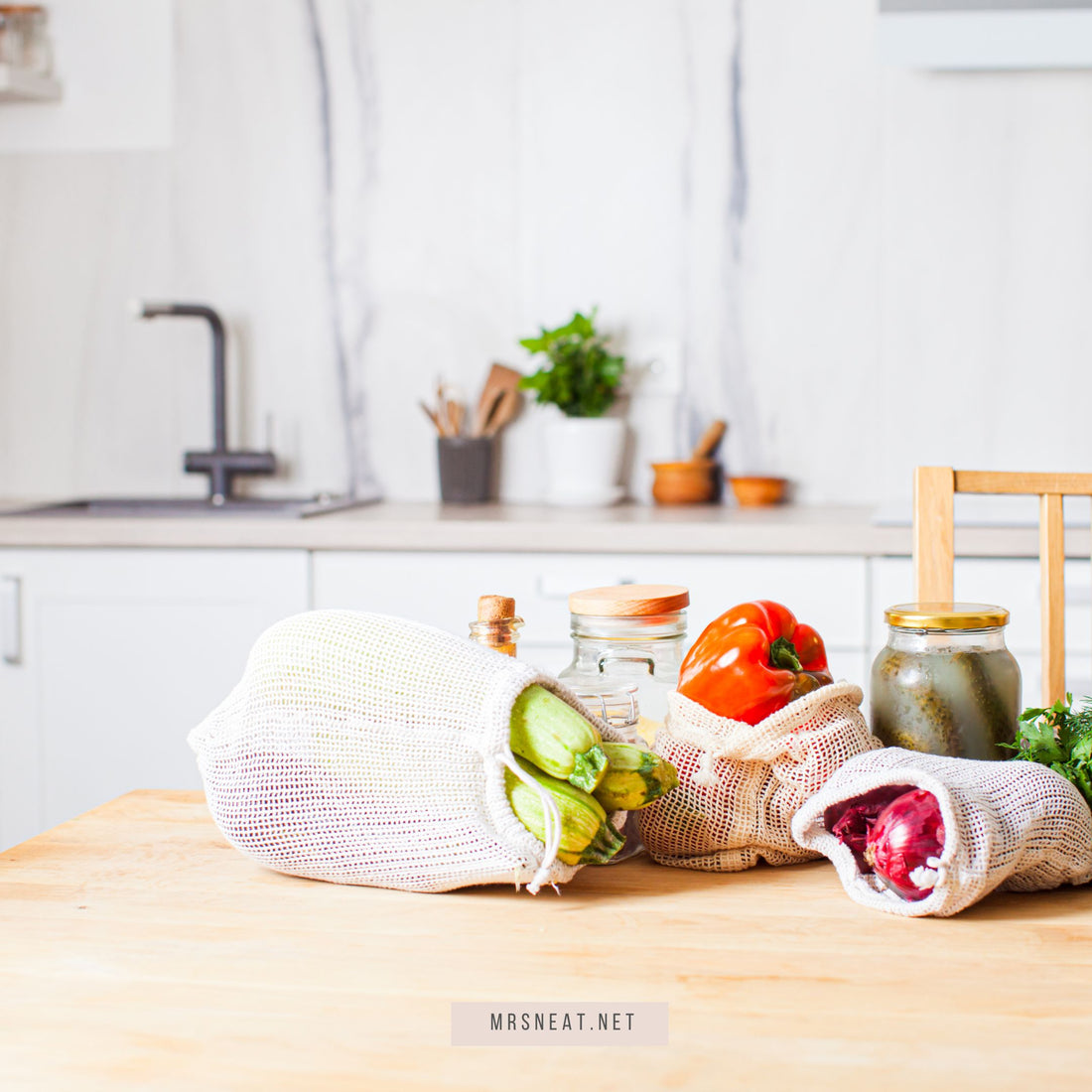
How to Save Money on Groceries: 15 Hacks You Need to Know
maris wariShare
Did you know that the average American household spends nearly $8,000 a year on groceries, with costs continuing to rise due to inflation and supply chain disruptions?
With food expenses making up a significant portion of our monthly budgets, finding ways to save on groceries has never been more crucial.
Effective grocery shopping can free up funds for other essential expenses and help you achieve financial stability.
In this post, we'll share 15 practical hacks to help you cut costs without sacrificing quality or nutrition, from savvy meal planning and using coupons to buying in bulk and reducing food waste.
Get ready to transform your grocery shopping habits and keep more money in your pocket!
Plan Your Meals #1
One of the most effective ways to save money on groceries is by planning your meals. Meal planning helps reduce impulse buys and food waste by allowing you to shop with a clear purpose.
When you know exactly what you need, you're less likely to pick up unnecessary items on a whim. Additionally, by planning your meals, you can make sure to use up all the ingredients you buy, which minimizes food spoilage and waste.
To get started, use a weekly meal planning template to organize your meals. Be sure to include leftovers in your plan, so you can enjoy them for lunch or another dinner, further stretching your food budget.
Also, plan your meals around sales and discounts at your local grocery store. This way, you can take advantage of lower prices and incorporate sale items into your weekly menu, maximizing your savings.
Make a Shopping List #2
Creating and sticking to a shopping list is a fundamental strategy for saving money on groceries. By adhering to a list, you can avoid unnecessary purchases that often result from spontaneous decisions and tempting promotions.
This disciplined approach ensures that you buy only what you need, keeping your spending in check and your pantry free of clutter. To enhance the effectiveness of your shopping list, organize it by store sections.
Grouping items by category—such as produce, dairy, and canned goods—not only makes your shopping trip more efficient but also reduces the likelihood of wandering into aisles where impulse buys lurk.
Additionally, regularly update your list based on your meal plans, household needs, and current inventory. This ensures that you remain focused on essentials and are always prepared, leading to a more streamlined and cost-effective shopping experience.
Use Coupons and Cashback Apps #3
Leveraging coupons and cashback apps can lead to significant savings on your grocery bills. Coupons provide immediate discounts on products, allowing you to pay less for items you already intend to buy.
Cashback apps, on the other hand, offer a way to earn money back on your purchases, effectively reducing the overall cost after you've checked out.
Together, these tools can make a substantial difference in your grocery expenses. To maximize your savings, start by sourcing coupons from reliable places such as your local newspaper, store circulars, and online coupon websites like Coupons.com and RetailMeNot.
For cashback apps, some of the top-rated options include Ibotta, Rakuten, and Checkout 51. These apps are user-friendly and often feature promotions on a wide range of grocery items.
By integrating coupons and cashback apps into your shopping routine, you can make the most out of every dollar spent, ensuring you get the best deals possible.
Buy in Bulk #4
Buying in bulk is a savvy strategy to reduce your grocery costs by taking advantage of lower per-unit prices that often come with larger quantities.
This approach allows you to stock up on essentials and non-perishable items at a fraction of the cost, ultimately saving you money over time.
However, to truly benefit from bulk buying, it's crucial to focus on items that are well-suited for this method, such as grains, pasta, canned goods, and household staples like toilet paper and cleaning supplies.
Proper storage is also key to ensuring that bulk purchases do not go to waste. Use airtight containers for dry goods to keep them fresh, and designate a cool, dry place for storing non-perishables.
For perishable items bought in bulk, like meat or frozen vegetables, consider dividing them into smaller portions and using freezer-safe bags or containers.
By carefully selecting bulk items and storing them appropriately, you can enjoy the financial advantages of buying in bulk without the risk of spoilage or waste.
Shop Sales and Clearance Items #5
Shopping sales and clearance items is a powerful tactic for cutting grocery costs by taking advantage of temporary price reductions.
Timing your purchases with store sales allows you to buy your favorite products at a fraction of their regular price, leading to substantial savings over time.
To make the most of this strategy, start by identifying the sale cycles of your local grocery stores. Many stores follow a predictable pattern for discounts, such as weekly flyers or holiday promotions, which you can track through store apps or websites.
Additionally, pay close attention to clearance sections, where products that are close to their sell-by dates or seasonal items being phased out are offered at steep discounts.
These sections can be goldmines for budget-conscious shoppers. By aligning your shopping trips with sales and clearance deals, you can fill your cart with quality items at significantly lower prices, stretching your grocery budget further than ever before.
Buy Generic Brands #6
Opting for generic brands over name brands is a smart and straightforward way to reduce your grocery expenses without compromising on quality.
Generic products often come at a significantly lower price point, yet they frequently offer the same taste and performance as their branded counterparts.
This cost-effective switch can lead to considerable savings, especially on staple items that you purchase regularly. To make the transition easier, start by experimenting with generic versions of pantry basics like flour, sugar, pasta, canned vegetables, and dairy products.
These items generally have minimal differences in quality and taste compared to name brands. Additionally, consider switching to generic for household essentials such as paper towels, cleaning supplies, and over-the-counter medications.
By incorporating more generic brands into your shopping routine, you can maintain the quality of your meals and household needs while enjoying substantial savings.
Use Loyalty Programs #7
Taking advantage of store loyalty programs is an excellent strategy for saving money on groceries through exclusive discounts and rewards.
These programs are designed to encourage repeat business by offering members special deals, personalized coupons, and points or cash back on purchases.
By signing up for loyalty programs at your favorite grocery stores, you can access these benefits and significantly reduce your overall shopping expenses.
To maximize the advantages, start by enrolling in the programs either online or in-store, which is typically free and quick. Once signed up, regularly check your account for available coupons and promotions tailored to your shopping habits.
Additionally, use the loyalty card or app every time you shop to accumulate points that can be redeemed for future discounts or free items. Combining loyalty program perks with sales and coupons can further enhance your savings, making your grocery budget stretch even further.
Avoid Shopping When Hungry #8
Avoiding grocery shopping when you're hungry is a crucial tactic to prevent unnecessary spending driven by hunger-induced impulses.
When you're hungry, your brain is more susceptible to cravings, making you more likely to buy items that are not on your shopping list, particularly high-calorie snacks and indulgent foods.
This psychological phenomenon can significantly inflate your grocery bill and lead to purchases you later regret. To counter this, plan your shopping trips after meals when you're full and less tempted by the sight and smell of food.
If this isn't possible, have a healthy snack before you go shopping to curb your appetite. Another effective strategy is to carry a list and stick to it strictly, which can help you stay focused on purchasing only what you need.
By being mindful of your hunger levels and taking steps to mitigate their influence, you can maintain better control over your grocery spending.
Cook at Home More Often #9
Cooking at home more often can lead to substantial savings by reducing the frequency of dining out and ordering takeout.
The cost of ingredients for home-cooked meals is generally much lower than restaurant prices, allowing you to stretch your budget further while also having control over portion sizes and nutritional content.
To ease into a routine of cooking at home, start with simple meal ideas like stir-fries, pasta dishes, or hearty soups. These meals are quick to prepare and require minimal ingredients.
Batch cooking can further maximize savings and efficiency; prepare larger quantities of dishes like chili, casseroles, or roasted vegetables, then portion them into servings to freeze or refrigerate.
This approach ensures that you always have a homemade meal ready, reducing the temptation to opt for more expensive and often less healthy takeout options.
Grow Your Own Herbs and Vegetables #10
Growing your own herbs and vegetables can result in significant long-term savings by reducing the need to purchase these items from the store.
Home gardening allows you to produce fresh, organic produce at a fraction of the retail cost, leading to ongoing savings season after season. To get started, consider planting beginner-friendly herbs like basil, mint, and parsley, which thrive in small spaces and are easy to maintain.
For vegetables, tomatoes, lettuce, and zucchini are excellent choices for novice gardeners due to their adaptability and high yield. These plants can often be started from seedlings, which are more resilient and easier to cultivate than seeds.
With a bit of care and attention, home gardening can provide a continuous supply of fresh produce, enhancing your meals and significantly cutting down your grocery bills.
Utilize Your Freezer #11
Utilizing your freezer effectively can greatly extend the shelf life of foods, resulting in reduced waste and significant savings.
Freezing preserves the nutritional value and taste of many foods, allowing you to buy in bulk or take advantage of sales without worrying about spoilage.
To maximize the benefits of freezing, follow best practices such as labeling containers with dates and contents, using airtight bags or containers to prevent freezer burn, and portioning meals into single-serving sizes for convenience.
Blanching vegetables before freezing helps maintain their color, texture, and flavor. Foods like soups, stews, and casseroles freeze particularly well, as do meats and bread.
By integrating these practices into your routine, your freezer can become a valuable tool for maintaining a well-stocked kitchen and minimizing food costs.
Buy Seasonal Produce #12
Buying seasonal produce is a cost-effective strategy that enhances both the quality and flavor of fruits and vegetables.
Seasonal items are often more abundant and less expensive due to lower transportation and storage costs, allowing you to enjoy fresh, nutrient-rich produce at its peak.
To take advantage of this, familiarize yourself with a seasonal buying guide: for instance, strawberries and asparagus are best in spring, while tomatoes and corn thrive in summer, and root vegetables like carrots and squash are abundant in fall.
Preservation methods such as canning, drying, and freezing can extend the benefits of seasonal buying throughout the year.
For example, freezing berries or canning tomatoes during their peak season ensures you have access to these ingredients long after their season ends, maintaining your savings and the superior taste of seasonal produce year-round.
Limit Processed and Packaged Foods #13
Limiting processed and packaged foods can lead to considerable savings, as these items often come with higher costs due to added convenience, branding, and packaging.
Processed foods also frequently contain less nutritional value compared to whole foods, making them a less economical choice in terms of health benefits.
Transitioning to a diet centered around whole foods involves simple steps such as incorporating more fresh fruits, vegetables, grains, and proteins into your meals.
Begin by planning your meals around these ingredients, and gradually replace packaged snacks with DIY alternatives like homemade granola bars, roasted nuts, and fruit slices.
Preparing larger batches of meals like soups, stews, and salads can also help ease the shift away from processed foods, providing you with convenient, nutritious options that can be stored and enjoyed throughout the week.
This approach not only supports a healthier lifestyle but also significantly reduces your grocery expenses.
Compare Prices Online #14
Comparing prices online offers numerous advantages, such as effortlessly finding the best deals and saving money without visiting multiple stores.
This method allows you to quickly check prices across various retailers, ensuring you get the most value for your money while also uncovering sales, discounts, and promotions that might not be advertised in-store.
To maximize savings, utilize websites and apps like PriceGrabber, Google Shopping, and Shopzilla, which aggregate prices from multiple sellers and highlight the best deals.
Additionally, browser extensions like Honey and CamelCamelCamel can track price changes and provide alerts for price drops on platforms like Amazon.
By incorporating these tools into your shopping routine, you can ensure you're always getting the best possible price on your purchases.
Reduce Food Waste #15
Reducing food waste has a significant financial impact, as it directly translates to lower grocery bills and more efficient use of purchased items.
Wasting food is essentially throwing away money, as the cost of uneaten groceries adds up over time.
To minimize food waste, proper storage is key: keep perishable items in airtight containers, use refrigerator drawers designed for fruits and vegetables, and label leftovers with dates to ensure they are used promptly.
Incorporate leftovers into new meals by repurposing them into creative recipes, such as turning roasted vegetables into a hearty soup or using cooked grains in salads and stir-fries.
Planning meals around ingredients you already have and regularly checking your pantry and fridge for items that need to be used up can further reduce waste.
By adopting these practices, you not only save money but also contribute to a more sustainable and environmentally friendly lifestyle.
In conclusion, adopting these 15 hacks can lead to substantial savings and a more efficient, sustainable lifestyle.
Cooking at home, growing your own herbs and vegetables, utilizing your freezer, buying seasonal produce, limiting processed foods, and comparing prices online are just a few strategies that can transform your spending habits.
Additionally, focusing on reducing food waste through proper storage and creative use of leftovers further maximizes your budget.
Implement these strategies and share your experiences to inspire others. We invite you to comment below with your own tips and success stories, fostering a community of smart and resourceful consumers.
For those looking to dive deeper into smart spending and budgeting, here are some valuable resources.
Utilize meal planning templates from our websites here to organize your weekly meals efficiently.
Top coupon sites like RetailMeNot, Coupons.com, and Honey can help you find great discounts on your purchases. Recommended cashback apps such as Rakuten, Ibotta, and Fetch Rewards provide additional savings on everyday shopping.
For further reading, check out our articles on saving money and budgeting;
- How to Save Money Easily: Try Our Printable Bi-Weekly Money Saving Challenge
- How to Save $20,000 using Printable Bi-Weekly Money Saving Challenge
- My Life Changing tool using Money Saving Challenge Planner
These resources will help you implement the strategies discussed and achieve your financial goals.







 https://www.linkedin.com/in/mariswari/
https://www.linkedin.com/in/mariswari/



